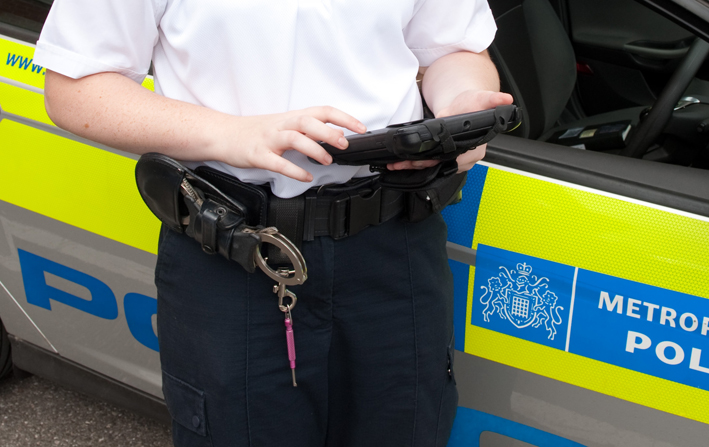Advances in technology
Terrestrial Trunked Radio (TETRA) is the digital trunked mobile radio standard developed by the European Telecommunications Standards Institute (ETSI). The purpose of the TETRA standard was to meet the needs of traditional Professional Mobile Radio (PMR) user organisations such as the UK police, where it is operated by O2 under the brand name Airwave.

Terrestrial Trunked Radio (TETRA) is the digital trunked mobile radio standard developed by the European Telecommunications Standards Institute (ETSI). The purpose of the TETRA standard was to meet the needs of traditional Professional Mobile Radio (PMR) user organisations such as the UK police, where it is operated by O2 under the brand name Airwave.
The air and network interfaces enable products from different manufacturers to interoperate with each other. For example, radio terminals from different manufacturers can operate on infrastructures from other manufacturers.
Motorola, which has installed over 300 TETRA networks worldwide and is responsible for well over a quarter of the worlds TETRA systems, recently introduced the first TETRA PDA which provides one of the most flexible ranges of connectivity available.
It also allows access to an extensive range of applications that can be tailored to the needs of individual companies. It was designed in association with police and other users and has been extensively trialed across the Airwave network, enabling officers to remotely access criminal intelligence databases (such as the PNC ), issue penalty notices and submit crime reports.
In its report, In The Event Of A guide to mission-critical networks for interoperable, secure, resilient and efficient communications for public safety users, Motorola highlighted that the quality of intelligence and operational support available to officers is advancing in line with new and enhanced applications. Technology advances include:
- Remote biometric systems allowing officers to capture the fingerprints of a suspect during routine operations, such as a traffic stop, and immediately verify the persons identity against the remote database in a matter of seconds
- Database interrogation officers can wirelessly interrogate virtually any database to request and receive information at the point of decision in the field, such as licence plate checks that alert a police officer if the suspect is known to carry a gun or if the vehicle has been reported stolen.
- Reporting using a two-way data communication channel, officers can also manage administration remotely and immediately make vital information available to colleagues. Specialist software applications are optimising the presentation of information fields on user devices. These are complemented by more intuitive methods to simplify data entry including drop-down menus, writing tablets and compact keyboards. These features are designed to make it simple to manage day-to-day administration tasks and, in times of crisis, ensure that information is captured quickly and easily. All audit demands are automatically managed by the application and require minimal input from officers, who benefit from the time-saving potential of field-based reporting. As a result, more time is spent on operational duties.
- Media networks now support rich content in reports and enquiries, including high resolution images. Officers looking for a suspect for a street robbery are able to receive real-time pictures of the individual from security cameras and the technology can also be used to quickly disseminate images of missing persons into the field.




